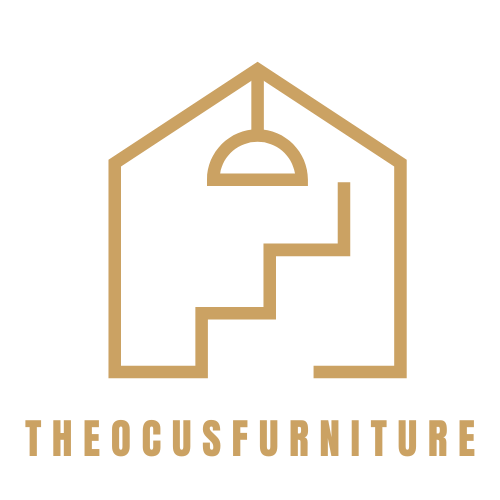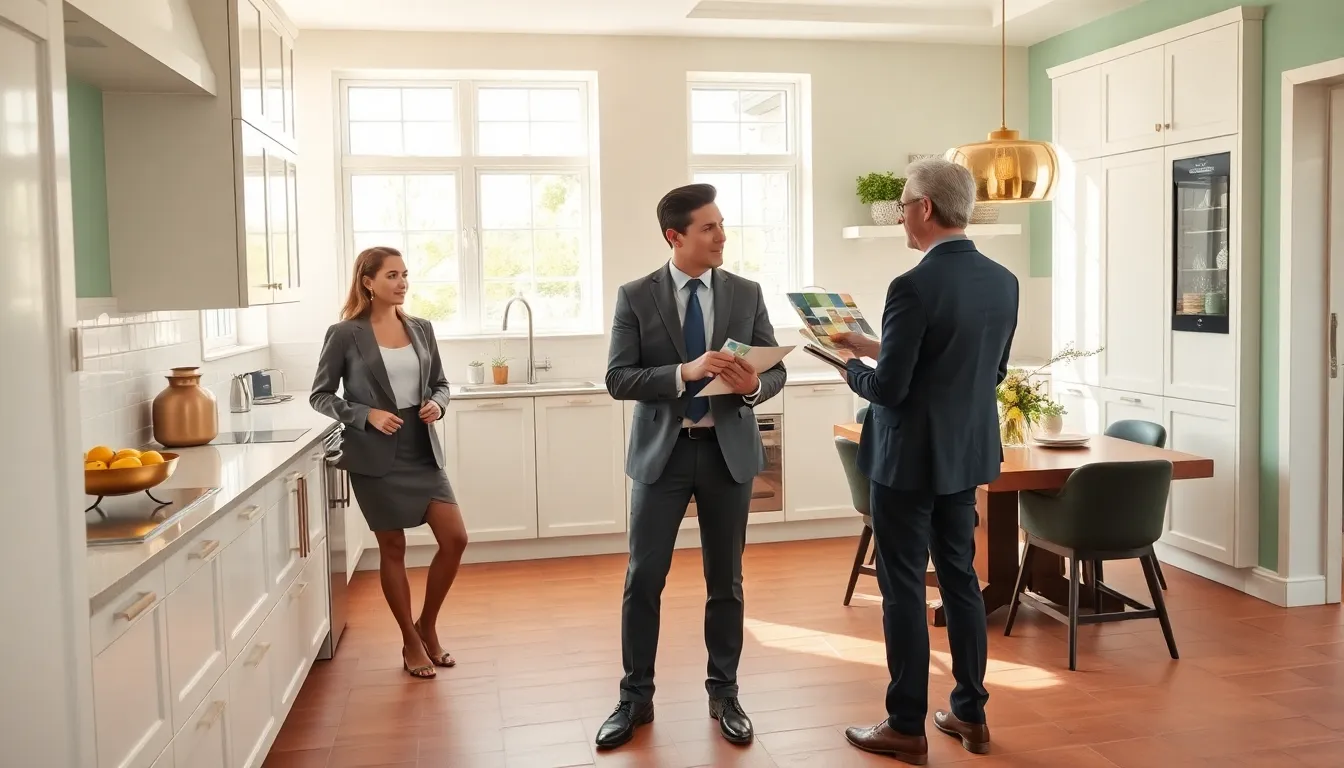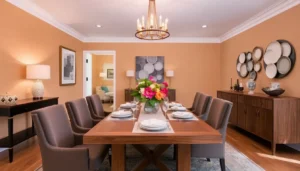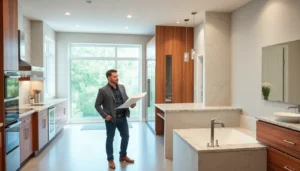Ever walked into a kitchen that felt more like a dreary dungeon than the heart of the home? You’re not alone. Choosing the right paint color for your kitchen can make the difference between a space that inspires culinary creativity and one that just sits there, sulking in beige. Whether you’re a fan of bold hues or prefer soothing tones, understanding paint colors isn’t just about aesthetics: it’s about setting the mood. Let’s break it down with a touch of humor and a whole lot of expertise, because your kitchen deserves to be as vibrant as your culinary adventures.
Table of Contents
ToggleThe Importance Of Color In Kitchen Design

Color plays a crucial role in kitchen design, influencing not just the overall aesthetic but also the atmosphere of the space. A fresh coat of paint can redefine a kitchen, enhancing its functionality and appeal. Light colors are often favored for their ability to make small spaces feel larger, while darker colors can create a chic, cozy ambiance.
Also, color can evoke certain feelings and behaviors. For instance, warm tones like reds and oranges can stimulate appetite, making them popular choices for dining areas within kitchens. Conversely, cooler shades, such as blues and greens, promote tranquility, ideal if you seek a calm cooking environment.
In essence, the right color can say a lot about your kitchen’s character, setting the stage for memorable meals and family gatherings. So, don’t overlook the importance of choosing the appropriate shade.
Choosing The Right Paint Color For Your Kitchen
When selecting a paint color for a kitchen, there are several factors to consider. First, think about the size and layout of your space. Is it a compact kitchen or a sprawling open-concept area? For smaller kitchens, lighter colors can work wonders by reflecting light and creating an illusion of space. On the other hand, larger kitchens offer more flexibility, allowing for deeper, bolder colors.
Next, take into account the existing cabinetry and countertops. The color of your cabinets can significantly impact your paint choice. For instance, if you have dark wood cabinets, a lighter, complementary color on the walls can brighten the space. If you’re feeling adventurous, don’t shy away from a bold contrast. It can give your kitchen a modern touch.
Eventually, personal style should guide your decision. Experimenting with paint samples on the walls can help visualize how different colors complement each other in various lighting conditions.
Popular Paint Color Trends For Kitchens
The world of kitchen paint colors is constantly evolving, with new trends emerging to reflect contemporary tastes. Currently, soft pastels are making a comeback, offering a fresh, airy feel. Colors like mint green and blush pink provide a gentle pop without overwhelming the senses.
Another popular choice is the classic navy blue, known for its timeless elegance. This versatile shade pairs beautifully with brass accents and white cabinetry, creating a striking contrast. Similarly, earthy tones like terracotta and sage green bring a touch of nature indoors, promoting a sense of warmth and tranquility.
Also, monochromatic schemes are trending as well, where subtle variations of a single color create depth and sophistication. This minimalist approach can make a kitchen feel cohesive and stylish, allowing accessories to take center stage.
Understanding Color Psychology In The Kitchen
Color psychology is a fascinating field that delves into how different hues affect our mood and behavior. In the kitchen, colors can subconsciously influence how we interact with this beloved space. For example, yellow is known to evoke feelings of happiness and optimism. Incorporating this sunny shade can create an inviting atmosphere, perfect for gatherings with family and friends.
On the flip side, grays and blacks can convey a sense of sophistication but may also come off as cold or unwelcoming if not balanced with warmer accents. So, selecting a color that aligns with the desired mood of your kitchen is essential.
Besides, consider the effects of natural light. A color that seems calming in bright sunlight can appear dramatically different under artificial light, so testing colors in various lighting conditions is key to getting it just right.
Complementary Colors And Kitchen Accents
Complementary colors can elevate a kitchen’s design by providing contrast and balance. Think about pairing a warm tone like coral with a cool teal. This dynamic duo catches the eye and adds a vibrant flair to the kitchen.
Plus to wall colors, accents like appliances, countertops, and decor play a significant role in the overall aesthetic. For instance, if you choose a deep green for the walls, consider using brass or gold accents for a touch of luxury. These elements should harmonize with the paint color while contributing their unique charm to the space.
Accessorizing with textiles, such as curtains and dish towels, can also reinforce the color scheme without overwhelming it. Just remember, the goal is to create a cohesive look that reflects both style and personality.
Tips For Choosing The Perfect Kitchen Paint Color
Choosing the perfect kitchen paint color can seem daunting, but a few simple tips can streamline the process. Start by gathering inspiration. Look through magazines, Pinterest boards, or even visit showrooms. Compile images of kitchens that resonate, focusing on the colors that stand out.
Consider your kitchen’s primary function: if you frequently entertain, a vibrant or warm palette can create a lively environment. Conversely, if it’s primarily a baking haven, calming colors might be the way to go.
Finally, always test paint samples before committing. Paint a small section on the wall to observe how it changes with the light throughout the day. This real-world test can save you from future regret over a color that seemed perfect in the store but falls flat in your kitchen.




